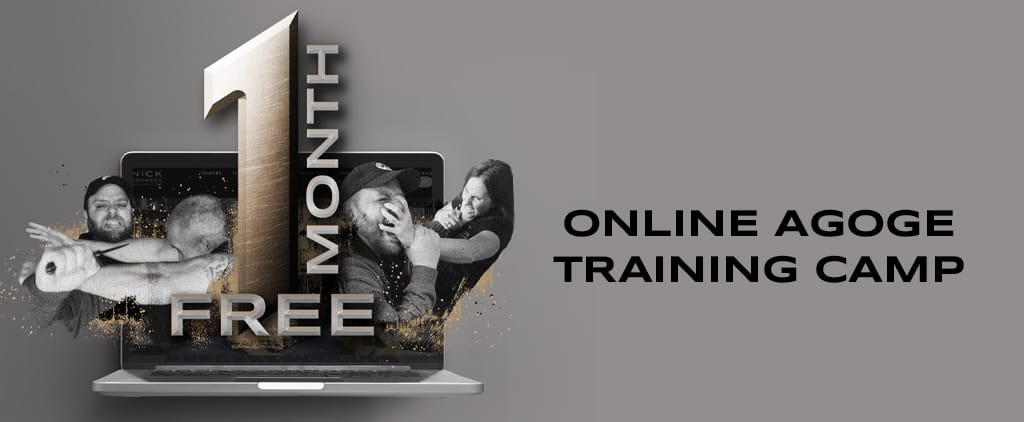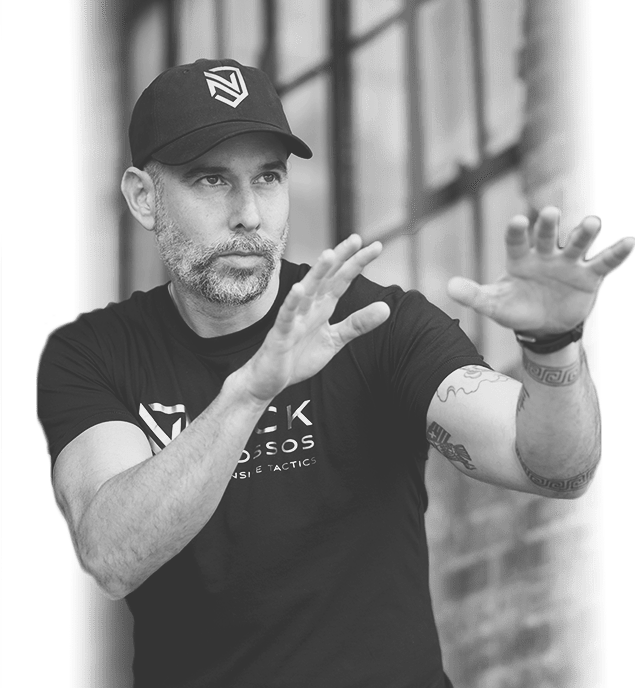Increased heart rate, sweating, goosebumps, dilated pupils, and elevated adrenaline levels, are human physiological and hormonal reactions to perceived danger. These acute stress responses are evolutionary adaptations commonly known as fight or flight. However, in a worst-case scenario, fight, flight, or ‘freeze.’
Fear is all-powerful and primitive; it’s a natural emotion and critical for survival. For the average human in distress, the biochemical response is basic instinct but it can be honed in on and even controlled subconsciously for the trained individual. Knowledge is power – it elevates your chances of survival and enhances your overall well-being and safety.
In addition, mastering how to keep cool the moment your fight or flight is triggered is vital – you don’t want to choke or become immobilized, and if you do – releasing the grip as quickly as possible is equally urgent and strategic. This blog is about escaping shock. It’s about Krav Maga’s mental conditioning. It’s about understanding how our stress responses are designed for absolute self-protection. Are you ready?
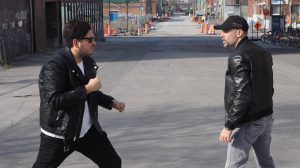
JOIN THE KRAV MAGA SURVIVAL COURSE!
Defining fight or flight
The fight or flight response is an automatic physiological reaction to an event that is perceived as stressful or frightening. The perception of threat activates the sympathetic nervous system and triggers an acute stress response that prepares the body to fight or flee. It’s basic instinct.
The Physiology of Fight or Flight
The “fight or flight” response is perhaps one of the most iconic pieces of “science” in self-defense circles. In the 1920’s American physiologist Walter Cannon was the first to brand the fight or flight response. He discovered that there are readily occurring reactions inside the body to propel its resources to deal with danger, including violence.
In addition, fight or flight ingrains psychological aspects – effective decision-making under stress, emotional tenacity, and trusting in the capacity of our instincts. During fight or flight, the gamut of our bodily systems is functioning to keep us alive in what we sense to be an unsafe or threatening situation. It’s assessing the density of the threat – what is occurring around us and determining our options.
It trains in the most realistic setting possible to develop the solid mental preparedness we need to react and survive. However, it’s imperative to remember never to mistake your reality-based training for an actual attack. When faced with the brutal reality of a violent attacker, or intense harm, your body will experience a biochemical response that one could never entirely prepare for.
Biochemical responses influence one or all of our five senses. Here’s how it works. As mentioned, the stress response initiates in the brain. Threat signals become processed in the amygdala or the ‘fear center’ of the brain. In turn, they travel to the hypothalamus, or ‘smart control’ area of the brain, which functions like a command center, communicating with the rest of the body. Finally, it activates the nervous system, empowering us with the energy to fight or flee.
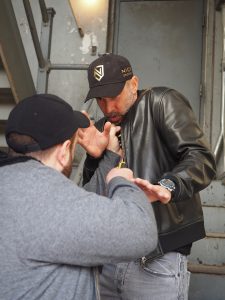
The Physical Signs of Fight Or Flight (Healthline)
- Heart rate. Your heart beats faster to bring oxygen to your major muscles. During freezing, your heart rate might increase or decrease.
- Lungs. Your breathing speeds up to deliver more oxygen to your blood. In the freeze response, you might hold your breath or restrict breathing.
- Eyes. Your peripheral vision increases so you can notice your surroundings. Your pupils dilate and let in more light, which helps you see better. Additionally, time seems to slow down, and you get tunnel vision. This helps you focus on survival without any other distraction.
- Ears. Your ears “perk up” and your hearing becomes sharper.
- Blood. Blood thickens, which increases clotting factors. This prepares your body for injury.
- Skin. Your skin might produce more sweat or get cold. You may look pale or have goosebumps.
- Hands and feet. As blood flow increases to your major muscles, your hands and feet might get cold.
- Pain perception. Fight-or-flight temporarily reduces your perception of pain.
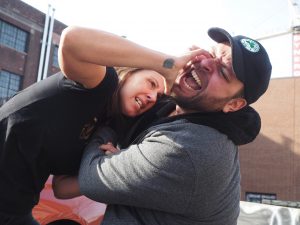
Krav Maga and Fight or Flight
The real-world self-defense of Krav Maga accepts the natural reactions indicative of fight or flight. The system initially chooses avoidance or flight. If violence or diffusion cannot be evaded, then fighting becomes a viable defense. It’s entirely contingent on how quickly you analyze that violence is imminent; you will either react preemptively and cast the initial strike or defensively to the incoming attack.
Krav Maga teaches mind conditioning to ensure panic is not your first call to action. Instead, it prioritizes mental training – as critical as developing your fighting prowess. Krav Maga self-defense training executes this through visualization and scenario planning. These strategies will boost your confidence, reduce fear, elevate your fighting technique and help you cope with the unanticipated hostile situation. All that you achieve both physically and mentally in your Krav Maga training will surmount to become your reflex reaction when face to face with danger.
READ: Why I Trust Krav Maga With My Life
By repeatedly visualizing a slew of possible scenarios and your reactions to them, your brain will spontaneously recall the responses you have mastered and react accordingly. Krav Maga is more than self-defense; it’s a pragmatic system and a prototype for survival. Fear is our instinct around dangerous things, and it exists to keep us alive. It only becomes our downfall if you allow it to take over. Therefore, it’s pivotal to recognize any fear you’re sensing and identify if they are plausible. Rational fear keeps us safe and protected, while panic can be fatal.
The flush of hormones released into our systems may be powerful enough to induce a state of alarm. ‘Undisciplined’ fear can then manifest itself in a plethora of ways. It may seem implausible, but it’s often the vital response in self-defense. At the most basic level, fear is a basic survival instinct and the catalyst for the fight or flight response.
Surviving in a street fight also demands training one’s mindset. So I developed a system of complete defense tactics to protect oneself when a threat arises – intelligent or reasonable. It’s a vast 48-step-by-step lesson to give you a complete breakdown and teach the skills you need to manage your fear.

Join The #1 Self Defense Course In The Industry!
It’s my mantra to empower personal protection in both mind and body. I utilize self-defense instruction, awareness training, and raw life experience to elevate your resilience and perform under acute stress, with Krav Maga being the pinnacle of my system.
I focus on developing the mental, tactical, physical and technical facets of Krav Maga, to instill a powerful and effective combat mindset, through expert conditioning.
It’s a champion way to simulate dangerous, life-threatening scenarios and the fight or flight response performed under acute stress and to master recognizing real versus perceived danger by simulating the fight or flight response.
My Hero program incorporates deliberate exercises and training, ultimately leading to a state of empowerment. Classes produce a true-to-life fighter experience and honest and sound assessment; this firsthand training will fundamentally construct a more tenacious and confident version of yourself. Translating that fear into effective and most potent energy through self-defense is the expertise of the Hero program.
